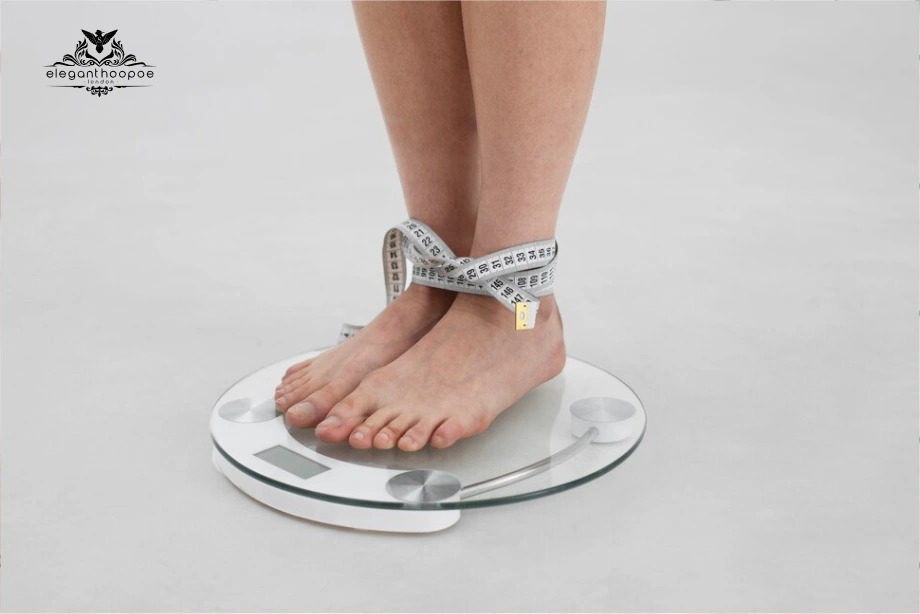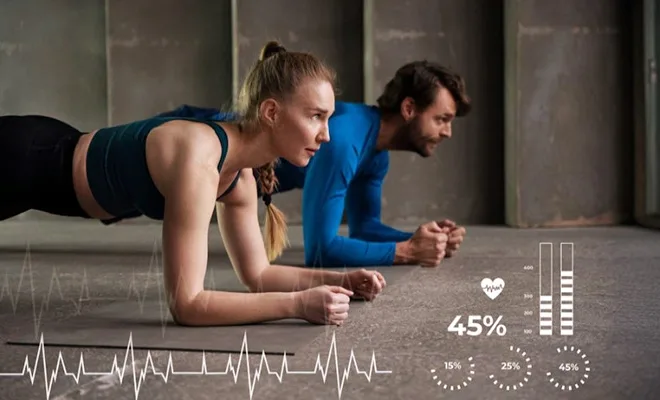Does BMI and Body Composition Give the Whole Health Picture?
BMI and Body Composition together reveal what the scale hides. BMI flags weight status, but only muscle-fat-bone analysis—via body-composition calculators, BIA or DEXA—shows real risk. Track:
- Muscle ↑ → higher metabolism
- Excess fat ↑ → metabolic disease
- Low bone density → fracture risk
Use both metrics plus strength training, cardio and balanced nutrition for a truer snapshot of health.
When discussing health and fitness, BMI body composition is one of the most commonly used measurements. However, relying solely on BMI does not provide a complete picture of an individual’s health. This is because it doesn’t take into account crucial factors like muscle mass, fat percentage, and bone density. For instance, two individuals with the same BMI may have very different health profiles depending on the proportion of muscle, fat, and bone in their bodies. This article explores the relationship between BMI and body composition and how using a body composition calculator or muscle, fat, bone calculator can provide a more thorough understanding of overall health.

What Is BMI?
BMI is a simple calculation based on a person’s height and weight, and it is commonly used to assess whether someone is underweight, normal weight, overweight, or obese. The formula for BMI is:
BMI = Weight (kg) / Height (m²)
Weight
Height
Age

The result is divided into categories:
- Underweight: BMI less than 18.5
- Normal weight: BMI 18.5 to 24.9
- Overweight: BMI 25 to 29.9
- Obese: BMI 30 or greater
While BMI calculation is easy and widely used in both clinical and public health settings, it is important to note that it does not distinguish between muscle and fat mass. Therefore, it may not accurately reflect the health status of someone with high muscle mass or low bone density. To gain a more complete understanding of health, it’s essential to look beyond BMI and consider factors like muscle, fat, and bone density.
The Role of Body Composition in Health
Body composition refers to the proportion of different tissues that make up the human body, primarily muscle, fat, and bone. It is a much more precise measure of health than BMI because it distinguishes between lean mass (muscle, bone, and other non-fat tissues) and fat mass. The key components of body composition include:
Muscle Mass
Muscle is a crucial component of body composition. It influences metabolic rate and strength and contributes significantly to overall health. The more muscle mass you have, the higher your metabolism tends to be, which can aid in fat loss and overall fitness.

Fat Mass
Fat mass includes both essential fat and stored fat. Essential fat is necessary for bodily functions, such as hormone regulation, cell structure, and protection of organs. Stored fat, however, is the type of fat that can accumulate in excess, contributing to obesity and increasing the risk of metabolic diseases like diabetes, heart disease, and hypertension.
Bone Density
Bone mass and density are crucial factors in overall health, especially as we age. Low bone density is linked to conditions like osteoporosis, which increases the risk of fractures and other bone-related injuries. Bone health is influenced by factors such as age, gender, physical activity levels, and nutrition.

Why BMI Alone Isn’t Enough?
BMI has long been used as a quick screening tool to assess an individual’s weight category, but it fails to provide insight into overall body health. It does not distinguish between fat and muscle, so a person with high muscle mass (like athletes) may be classified as overweight or obese despite having low body fat. Similarly, a person with low muscle mass and high fat content could be classified as having a normal BMI but still be at risk for obesity-related health issues.

How Muscle, Fat, and Bone Impact Health
BMI does not differentiate between muscle, fat, and bone, which is why two people with the same BMI can have very different health profiles:
Muscle Mass
People with high muscle mass (e.g., bodybuilders or athletes) will often have a higher BMI, even though they have low body fat. This is because muscle weighs more than fat, and BMI doesn’t account for that difference. This is one of the main reasons why BMI may misclassify athletes as overweight or obese.
Fat Mass
On the other hand, a person with low muscle mass and higher body fat may have a similar BMI but be at a higher risk of metabolic diseases like type 2 diabetes, heart disease, and high blood pressure. Since BMI doesn’t distinguish fat mass from lean mass, it could miss these health risks in individuals with high body fat percentages.
Bone Density
Bone density plays a vital role in overall health, especially as we age. The body BMI formula assumes a standard bone density for everyone, which is not the case. People with high bone mass may have a higher weight, but their BMI would not accurately reflect their health status. Additionally, individuals with lower bone mass (such as those at risk for osteoporosis) might have a lower BMI that doesn’t accurately reflect their overall health risk.
Tools to Measure Body Composition More Accurately
Unlike BMI, which uses a simple height and weight formula, a body composition calculator uses advanced measurements to assess the proportions of muscle, fat, and bone in the body. These calculators typically involve measurements such as body fat percentage, lean body mass, and bone density, providing a more accurate and comprehensive understanding of an individual’s health. A more specific and accurate tool would be the muscle fat bone calculator, which can help assess muscle, fat, and bone mass separately.

Different Methods to Measure Body Composition
Body composition calculators often use different methods to estimate body fat, muscle mass, and bone density, such as:
Bioelectrical Impedance Analysis (BIA)
This method uses a small electrical current passed through the body to estimate body composition. The resistance encountered by the current helps estimate fat mass, lean mass, and water content.
Dual-Energy X-ray Absorptiometry (DEXA)
A more precise method used to measure bone mineral density and body fat percentage. DEXA scans provide a detailed breakdown of lean tissue and fat mass.
Skinfold Calipers
This method involves measuring the thickness of skinfolds at various points on the body to estimate body fat percentage. It’s less accurate than BIA or DEXA but still widely used for its simplicity.
Hydrostatic Weighing
Considered the gold standard in body composition measurement, hydrostatic weighing involves weighing an individual underwater to estimate their body fat percentage.
The Importance of a Comprehensive Health Analysis
Unlike BMI, which is a general indicator, a body composition calculator offers a more personalized approach to understanding health. It provides a deeper analysis of:
- How much muscle mass you have and how it contributes to your metabolism.
- The percentage of body fat and where it’s distributed (e.g., abdominal fat, subcutaneous fat).
- Bone density and whether it’s at risk due to osteoporosis or other factors.
This more detailed information can help individuals make more informed decisions about their diet, exercise, and overall health.
The Role of Exercise in Improving BMI Body Composition
Exercise, especially strength training, is crucial for improving body composition. Building muscle mass through resistance training can significantly improve muscle-to-fat ratio, enhance metabolic rate, and reduce fat. Additionally, regular exercise can help maintain or increase bone density, reducing the risk of osteoporosis and fractures.

Strength Training
Building muscle mass is one of the most effective ways to improve body composition. Strength training exercises like weightlifting, resistance bands, and bodyweight exercises can increase muscle mass, boost metabolism, and improve overall fitness.
Cardiovascular Exercise
While strength training focuses on muscle, cardiovascular exercise (e.g., running, cycling, swimming) is excellent for burning fat. Combining both types of exercise can help improve body composition by reducing body fat while increasing lean muscle mass.
Bone Health
Weight-bearing exercises like walking, jogging, and resistance training can help improve bone density, reducing the risk of bone-related issues as you age.
How Nutrition Affects Body Composition
Nutrition plays a crucial role in body composition. A balanced diet rich in protein, healthy fats, and complex carbohydrates is essential for building muscle and reducing fat. Specific nutrients, like calcium and vitamin D, are essential for bone health, while a protein-rich diet supports muscle repair and growth.

Protein and Muscle Mass
Protein is the building block of muscle, and consuming enough protein is vital for muscle repair and growth. Strength training combined with adequate protein intake helps to increase lean body mass while decreasing fat mass.
Healthy Fats and Bone Health
Essential fatty acids, such as omega-3s, support bone health and help reduce inflammation. Omega-3s are found in fatty fish, flaxseeds, and walnuts, and they have been shown to support bone mineral density.
Bone Health Nutrition
For bone density, it’s essential to consume enough calcium and vitamin D. Calcium supports bone structure, while vitamin D helps the body absorb calcium. Foods like dairy products, leafy greens, and fortified cereals are rich in calcium, and vitamin D can be obtained from sunlight or supplements.
Conclusion: BMI and Body Composition
BMI body composition can be a helpful tool for assessing general weight categories, but it is far from a comprehensive measure of health. To fully understand body health, it is necessary to look at BMI body composition — specifically muscle mass, fat percentage, and bone density. Using tools like a body composition calculator or muscle fat bone calculator offers a more accurate understanding of your health, allowing for more personalized health strategies.
A balanced diet, regular exercise, and adequate attention to muscle, fat, and bone health are essential to improving body composition and overall well-being. Combining all of these aspects will lead to better health outcomes and help individuals achieve their fitness and health goals.
References
British Heart Foundation-What’s the best way to measure body fat?












